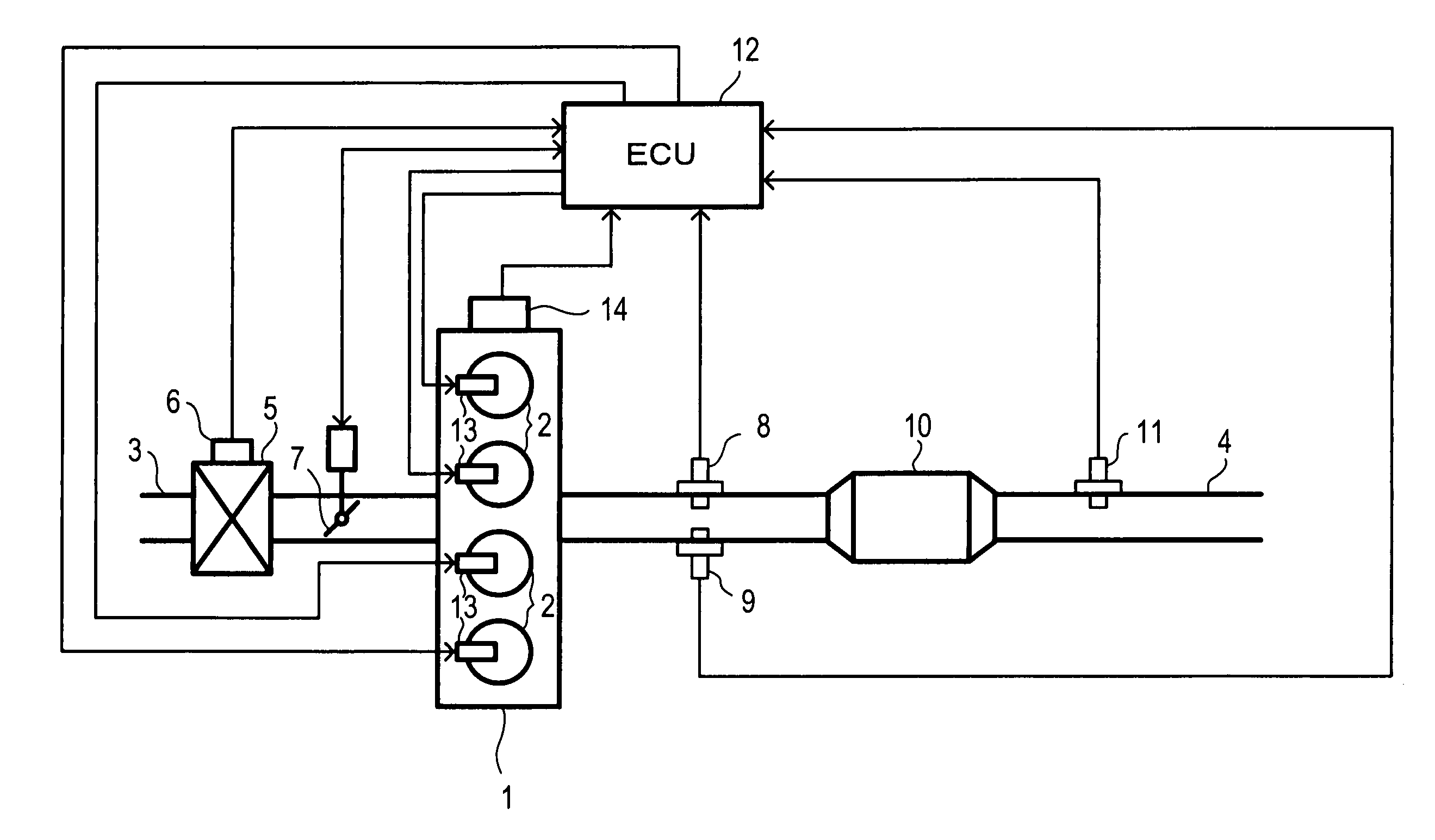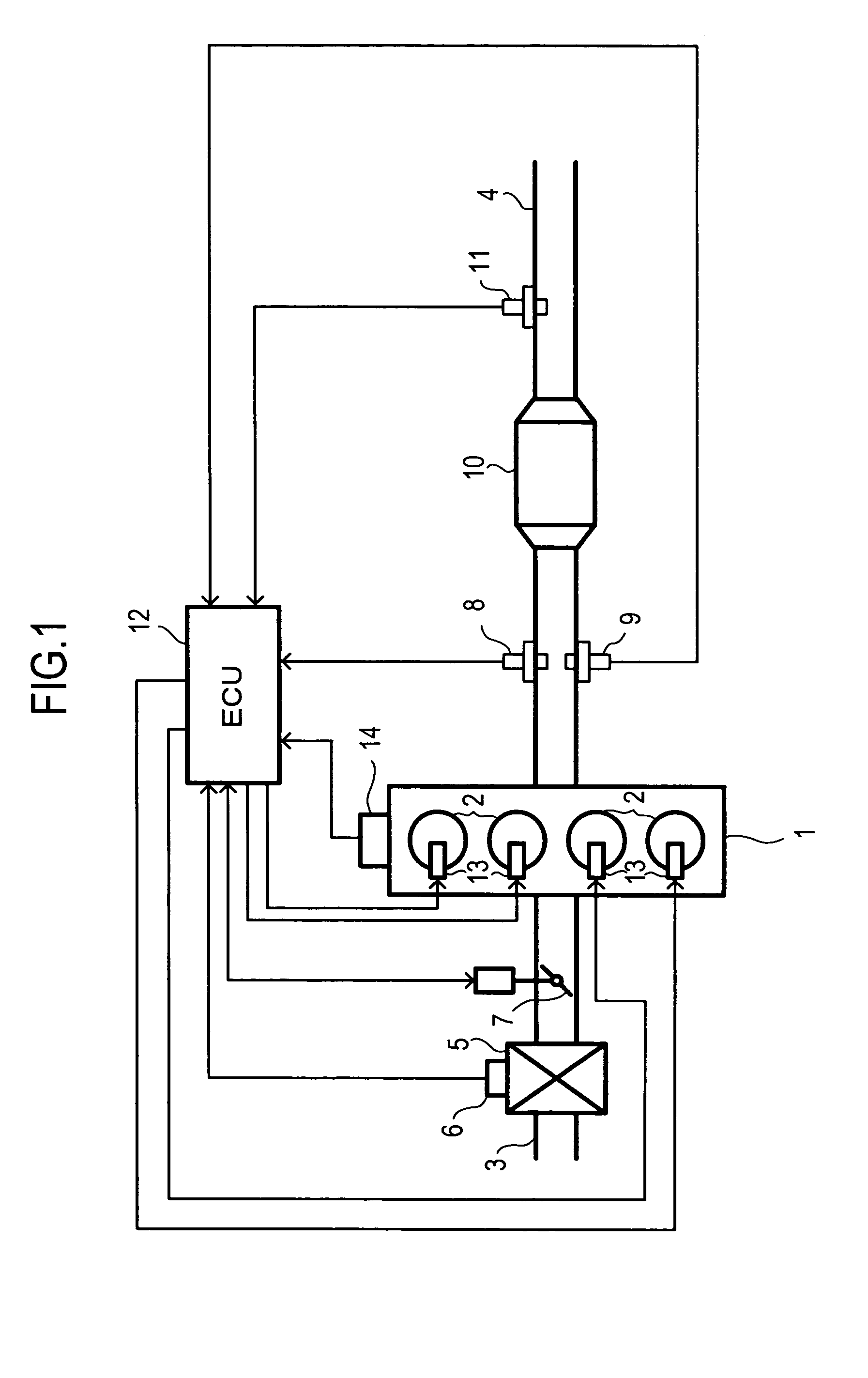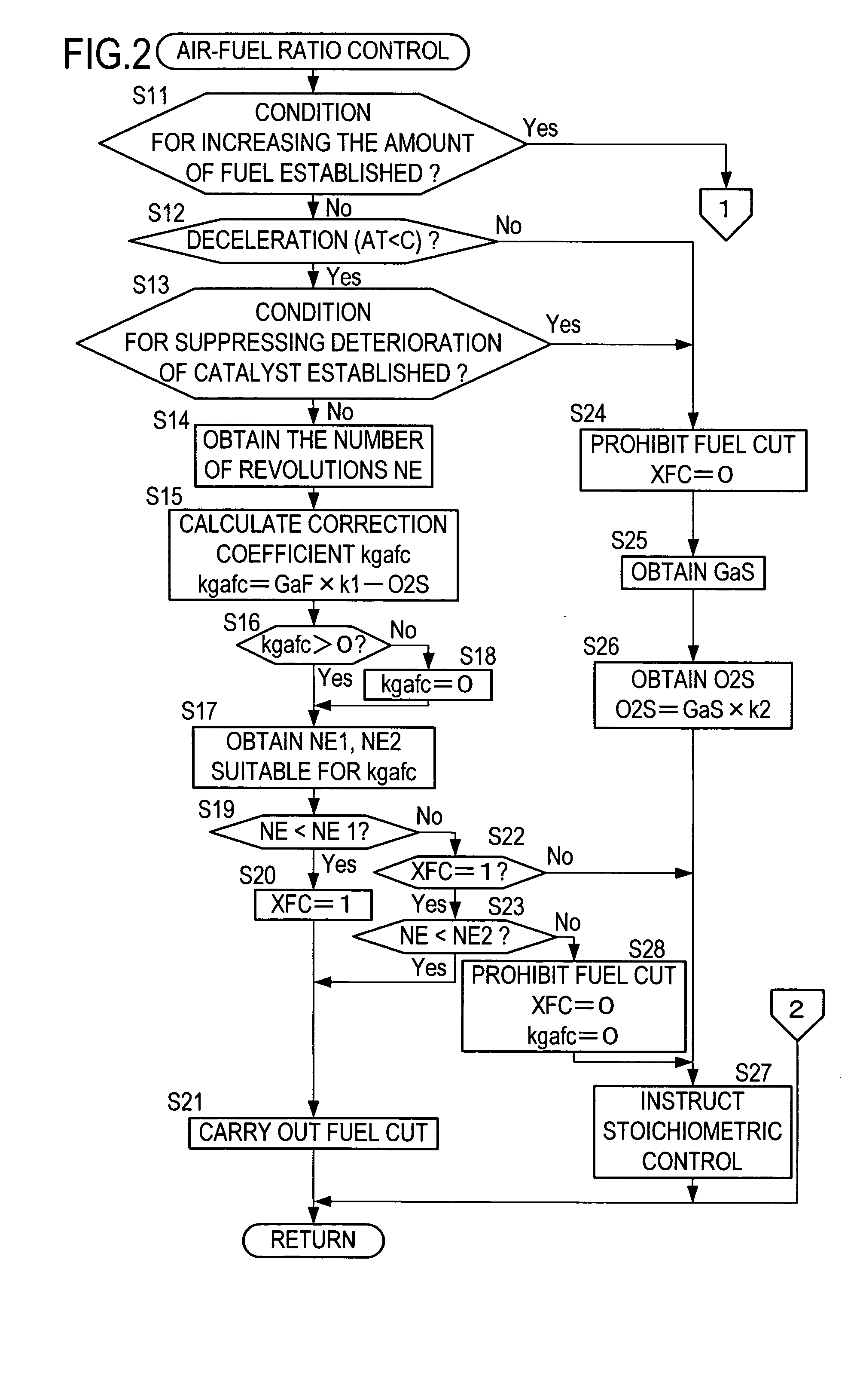Air-fuel ratio control apparatus of internal combustion engine
a technology of air-fuel ratio and control apparatus, which is applied in the direction of electric control, speed sensing governor, machines/engines, etc., can solve the problems of increasing the difficulty of carrying out the stop of fuel supply, so as to achieve the reduction of the effect of reducing the number of revolutions of fuel cu
- Summary
- Abstract
- Description
- Claims
- Application Information
AI Technical Summary
Benefits of technology
Problems solved by technology
Method used
Image
Examples
first embodiment
[0023]FIGS. 2 and 3 are flowcharts showing a control routine of the air-fuel ratio which is carried out by the ECU 12 to control the air-fuel ratio of the internal combustion engine 1. The control routine of the air-fuel ratio shown in FIGS. 2 and 3 is repeatedly carried out at predetermined cycle during the operation of the internal combustion engine 1.
[0024]In the air-fuel ratio control routine shown in FIG. 2, the ECU 12 first determines in step S11 whether a fuel amount increasing condition for increasing the amount of fuel to be supplied to the internal combustion engine 1 is established. The fuel amount increasing condition is established, for example, when the increase of the output of the internal combustion engine 1 is required. If it is determined that the fuel amount increasing condition is not established, the procedure is proceeded to step S12, where the ECU 12 determines whether the internal combustion engine 1 is in a decelerated state. If the opening of the throttle ...
second embodiment
[0030]FIGS. 5 and 6 are flowcharts showing the air-fuel ratio control routine which is carried out by the ECU 12. The air-fuel ratio control routine in FIGS. 5 and 6 is repeatedly carried out at predetermined intervals during operation of the internal combustion engine 1. In FIGS. 5 and 6, the same processing is designated with the same step numbers as that of the FIGS. 2 and 3, and explanation thereof will be omitted.
[0031]In the air-fuel ratio control routine shown in FIG. 5, the ECU 12 first obtains a maximum oxygen occluding amount Cmax of the catalyst 10 in step S51. The Cmax is calculated by a Cmax calculation routine which is different from the air-fuel ratio control routine, and the Cmax is stored in the RAM of the ECU 12. The Cmax can be obtained by the following method for example. When the internal combustion engine 1 is operated in a substantially steady state in a partial load region, rich control for bringing the air-fuel ratio of the internal combustion engine 1 to ri...
third embodiment
[0035]FIGS. 8 and 9 are flowcharts showing the air-fuel ratio control routine carried out by the ECU 12. The air-fuel ratio control routine in FIGS. 8 and 9 is repeatedly carried out at predetermined intervals during operation of the internal combustion engine 1. In FIGS. 8 and 9, the same processing is designated with the same step numbers as that of the FIGS. 5 and 6, and explanation thereof will be omitted.
[0036]In the air-fuel ratio control routine in FIG. 8, the same processing as that of the control routine shown in FIG. 5 is carried out until the number of revolutions NE of the internal combustion engine 1 is obtained (step S14). In next step S61, the ECU 12 calculates the correction coefficient kgafc. The correction coefficient kgafc can be calculated by subtracting O2S and an amount O2FC of oxygen supplied to the catalyst 10 in a period during which the fuel cut is carried out. The amount O2FC can be obtained in later-described step S63, from a value obtained by multiplying...
PUM
 Login to View More
Login to View More Abstract
Description
Claims
Application Information
 Login to View More
Login to View More - R&D
- Intellectual Property
- Life Sciences
- Materials
- Tech Scout
- Unparalleled Data Quality
- Higher Quality Content
- 60% Fewer Hallucinations
Browse by: Latest US Patents, China's latest patents, Technical Efficacy Thesaurus, Application Domain, Technology Topic, Popular Technical Reports.
© 2025 PatSnap. All rights reserved.Legal|Privacy policy|Modern Slavery Act Transparency Statement|Sitemap|About US| Contact US: help@patsnap.com



